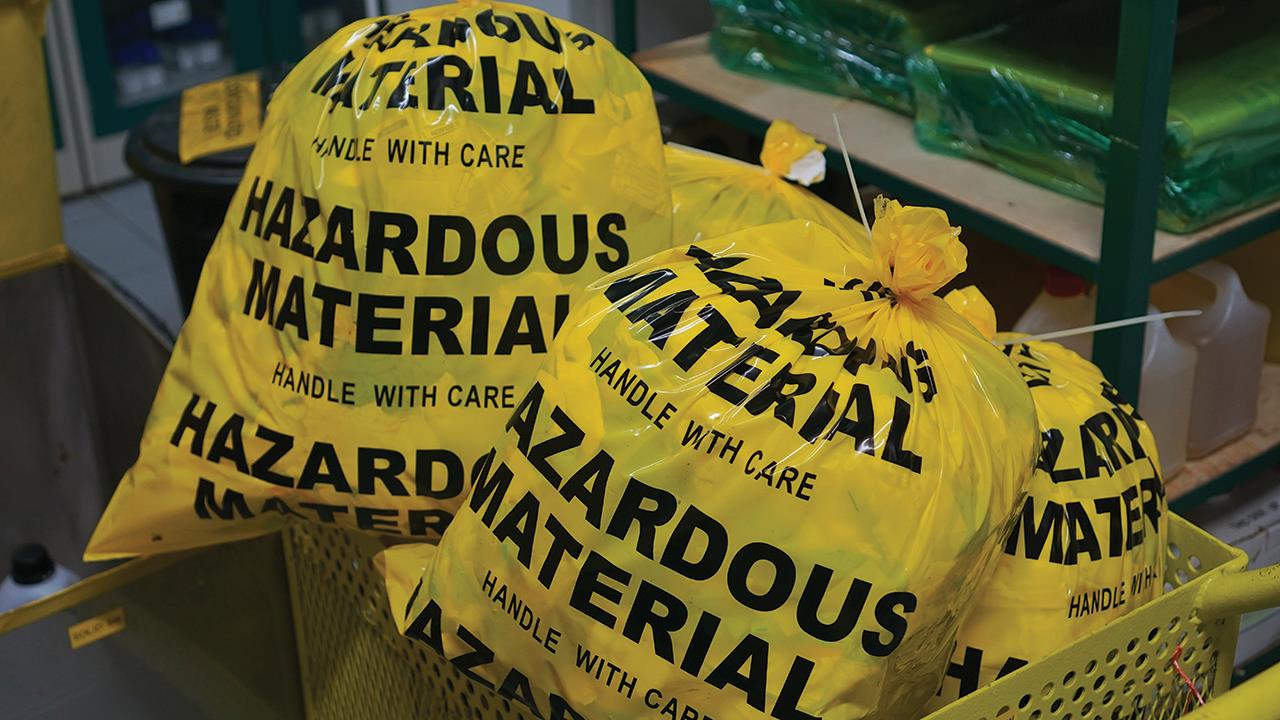

The Control of Substances Hazardous to Health Act (COSHH) oversees occupational health and safety associated with hazardous substances. However, it is not always apparent who is legally responsible for putting COSHH into work applications and ensuring the measures are adhered to on a daily basis. Ultimately, the responsibility will fall on the employer, as we will outline below, but employees also have obligations to meet.
To ensure COSHH compliance, it is critical that everyone within an organisation understands their roles and responsibilities. Below, we explore the hazardous substances covered by COSHH that you and your employees could encounter in the workplace, and the three control measures that every business should know.
Seven hazardous substances
COSHH laws oversee the following hazardous substance categories:
To indicate that a substance is hazardous, there are nine hazard symbols used for COSHH labelling. These include:
Who takes responsibility?
The employer is responsible for adopting and maintaining COSHH compliance measures in the workplace. They must therefore ensure that all work procedures and storage comply with COSHH regulations.
The employer is also responsible for ensuring that all employees are aware of the COSHH regulations and have the knowledge and competence to adhere to them.
If an employee causes a workplace accident because they were unaware of the dangers of a hazardous material, the company may be held liable – so it is vital that the risks and appropriate control measures are well-communicated and thoroughly understood by all on-premises.
Three COSHH control methods
The person in charge of implementing and maintaining COSHH regulations in the workplace must meet three essential standards of compliance.
Control equipment
Hazardous materials must be handled, stored, and used in accordance with a variety of control measures that vary according to the substance or activity. Using COSHH-compliant equipment guarantees that you meet the required standards.
The COSHH control procedures for a hazardous substance help determine how it must be handled and stored, in order to reduce the likelihood of spills or other accidents, protecting workers from injury and mitigating the risk of harmful exposure.
Working methods
The COSHH control procedures define how staff members should handle hazardous items in their routine duties. It is critical that everyone working with toxic compounds understands the proper measures to take.
All operations, monitoring, and training must maintain the highest levels of safety. Employers are legally bound to protect their employees’ health, but employees must also use their training and handle potentially hazardous substances with caution.
Workplace behaviour
Once the control mechanisms and processes are in place, it is vital that everyone follows them. It is equally vital to use these metrics appropriately and to continuously check them to make sure they are still acceptable for the activities and drugs you are consuming.
A workplace must always satisfy the highest standards of control measures, which include using COSHH-compliant storage, wearing personal protective equipment (PPE) when necessary, and developing and following protocols that warn supervisors in the event of an emergency.
If you'd like to keep up-to-date with the latest developments in the heating and plumbing industry, why not subscribe to our weekly newsletters? Just click the button below and you can ensure all the latest industry news and new product information lands in your inbox every week.